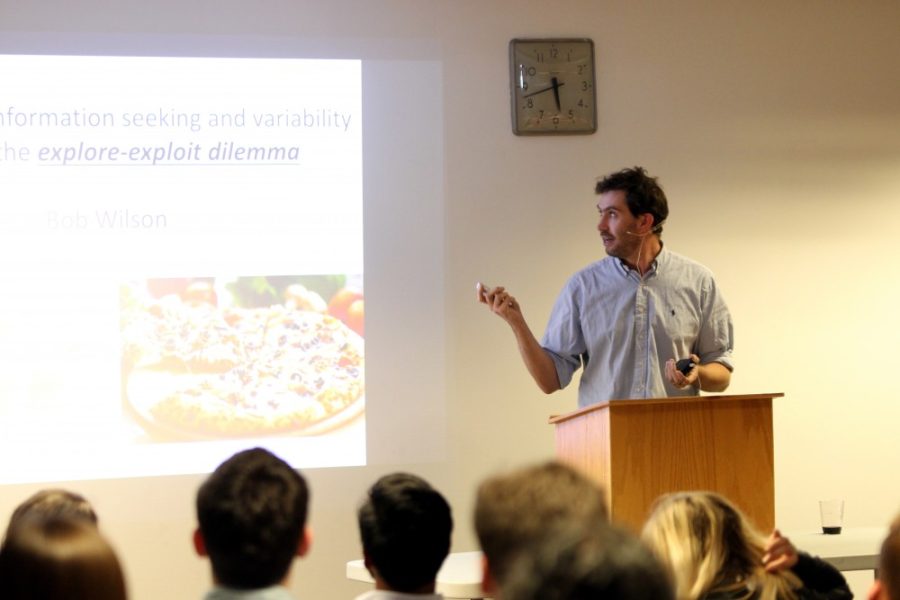Large red beanbag chairs filled the front row in the Tucson Museum of Contemporary Art on Jan. 26, where the UA neuroscience community was hosting its much-anticipated Neuroscience Data Blitz.
The event, which is showcased two times per semester, is an opportunity for several UA professors, graduate students and postdoctoral researchers to present their most recent research findings to other colleagues in the name of scientific enhancement and community building.
Unlike other talks, Blitz allows only five minutes for each speaker to present any exciting data that they found while conducting research.
The featured UA speakers in this Blitz session included: neuroscience assistant professor Dr. Haijiang Cai, psychology assistant professor Dr. Robert Wilson, pharmacology associate professor Dr. Rajesh Khanna, neuroscience graduate student Elliot Imler and director of the Evelyn F. McKnight Brain Institute, Dr. Carol Barnes.
From studies that explore the neuroscience behind decision-making when ordering a pizza to the investigation of ion pathways that cause chronic pain, each speaker brought a new and different research topic to the table that truly demonstrated the diversity of the growing field of neuroscience.
The event, usually only open to faculty and graduate students, allowed 10 undergraduate neuroscience and cognitive science students to attend.
Among them was Colin Potter, a sophomore studying neuroscience and molecular and cellular biology, who shed light on his favorite talk of the night: Khanna’s research on chronic pain pathways that clash when fired simultaneously.
“[Khanna’s] talk stood out to me because it drew my attention to how complex molecular neuroscience is and how many factors have to be functioning properly in order to produce the physiology we see,” he said. “It’s also incredibly specific, with different ion channels performing the exact same function but interacting differently with specific proteins despite their functional similarities.”
Each investigator had an underlying purpose that tied them together: answering one research question of passion that often takes many years of study to breach.
“Questions in science take so, so long to answer. There’s multiple technical issues with technology itself. Patience is a really good quality in science,” said Barnes, whose primary research involves the similarities in the neural hardware of birds, turtles, rats and monkeys. “Sometimes, if you’re patient enough, you will eventually reach the point where technology catches up so that you can make your discoveries.”
Although Barnes started her research project in 2001, she has only just reached the point to where she is able to capture the activation patterns of free-roaming Rhesus monkeys.
The UA is the only university in Arizona to offer an undergraduate degree program in neuroscience.
For many students, this degree program is a major deciding factor when choosing which university to pursue for their undergraduate career.
Even though the neuroscience and cognitive science major started small and has been steadily growing over the years, it seems like the students and faculty have created their own community niche on the large UA campus.
“I can safely say that neuroscience at [UA] is as much of a family as it is an academic program. Everyone seems to be working towards a common goal of advancing the field and I love being part of that,” said Kia Soofi, a junior studying neuroscience and cognitive science who was in the crowd. “Choosing neuroscience was definitely one of the best decisions in my life.”
After the presentations, participants attended a dinner where they could have one-to-one interactions with their professors and discuss any interest in future research.
Follow Arturo Bradic on Twitter.









